Motorsports Racing News & Blog Articles
Canbus And Motorcycles
If you’re curious what technology you might expect to see on motorcycles of the future, look no further than the cars of today. From anti-lock braking systems to traction control and variable valve timing, nearly all the tech we’re ogling over on today’s motorcycles originated on cars 20 years ago. Or more. By now the trickle-down effect of that technology is such that even your basic commuter car already incorporates it.
Another example of this trickle-down tech we’re starting to see on today’s motorcycles is the CANBUS system. We give a lot of attention to tech when it makes the motorcycle faster or safer, but there’s not much fanfare over the electronic infrastructure some OEMs are using to allow all of these subsystems to work together. Finally, electronic engineers, your moment to shine is now. Here’s a quick look at CANBUS and how it’s used on motorcycles.
The Beginning
Before we begin, you should know this is by no means an exhaustive or comprehensive history and outline of the CANBUS network, but rather a quick overview of what it is and why you should care.
The story starts in the early 1980s when Bosch developed the protocols for the CANBUS network. A decade later, the auto industry started to adopt it as the standard for cars going forward. Fast forward again to the early 2000s and BMW are credited with being the first manufacturer to incorporate the tech on two wheels.
But that still begs the question: What is CANBUS anyway?
An Overview
Traditionally, a motorcycle’s electronic system starts at the battery, and any component relying on power would be wired to it. A fuse box would stand between the component and the battery to protect both elements from damage in the event of a spike in resistance, with a blown fuse being the last sacrificial element in keeping everything safe.
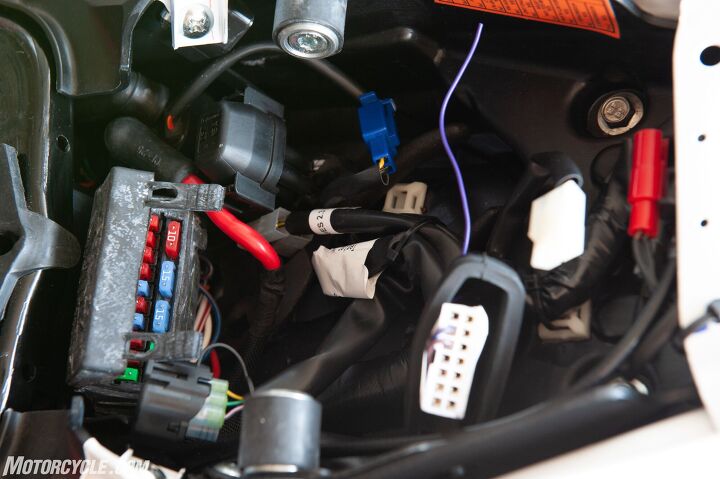
To the left of the picture you’ll see the fuse box on this KTM 390 Duke. Surrounding it you see various loose connectors. A CAN system does away with the fuse box and makes wiring cleaner.
As motorcycle tech keeps advancing, this point-to-point wiring system gets increasingly complex and bulky. Nonetheless, many new motorcycles on the road today still rely on this system. One of the benefits some would claim is that, should a failure occur to a subsystem, you can often trace its path of power back to a blown fuse. Simply replace it and you’re back in business. However, critics would say the effort to sort through the bigger and bigger mess of wires is a hassle, and you won’t necessarily know what the issue is every time until you track down the wiring.
The term CAN (Controller Area Network) BUS refers to a network protocol, usually with a central computer – separate from the motorcycle’s ECU – acting as the central communication hub between all the other subsystems. By subsystems, we’re talking about everything from the headlights and turn indicators to the engine management system and ABS. In short, everything.
A CANBUS data network can be thought of like the human nervous system. At the top we have our brain. The brain sends signals through a central channel (the nervous system) to various parts of the body to do something. The same is true for the CAN network. The central computer is the hub and a single wiring harness is the nervous system connecting the computer to the subsystems, allowing them to communicate and “do something.”
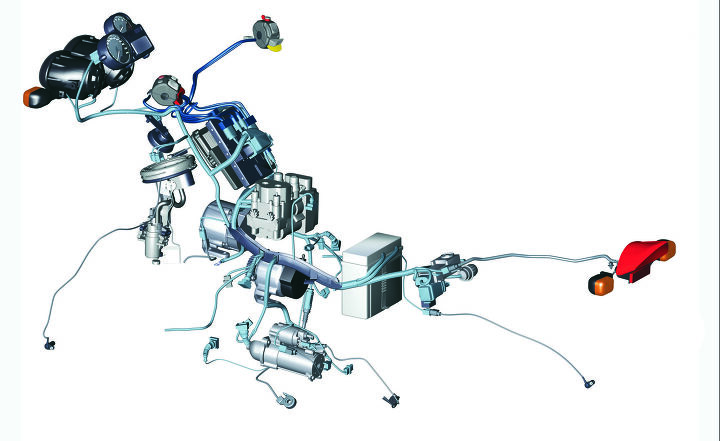
This CAN wiring diagram comes from a 2004 BMW GS. If you’re keeping track at home, that’s 17 years ago! Motorcycles have become more complex since then, but the basic principle is the same. The central computer is the main hub, then various wires and connectors branch out from it to all the subsystems throughout the motorcycle. Everything from the brake light to the ABS are all communicating with the central computer.
Since there’s a single wire harness different functions can piggyback on each other, meaning one wire can perform multiple tasks, reducing the amount of wiring needed compared to a conventional point-to-point system. All of the various subsystems have their own micro computer command stations that are constantly talking back and forth with the central computer to monitor everything. When there’s a failure, the central computer automatically shuts down that particular system, eliminating the need for a fuse box. Instead of having to hunt down wires to narrow down the issue, some sort of error code (or message, or light) will be displayed on the dash. This is what is meant when people say their dash is “throwing a code.” A code reader can then tell you what the problem is.
But There’s A Problem
This is where things get tricky for the CAN protocol. The central computer is programmed to accept a certain power draw or resistance from each subsystem. Sometimes, when you modify your motorcycle, you’ll change those readings. This confuses the computer and sometimes leads towards improper operation of the part and/or error messages popping up on your dash.
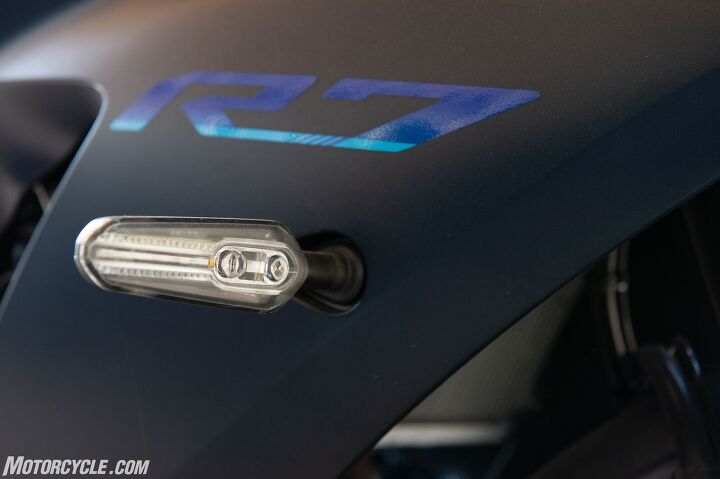
If you’re upgrading from incandescent lights to LEDs, be sure to choose CAN-appropriate replacement bulbs.
A common example of this is your lighting system. On motorcycles with incandescent headlights, it’s common to upgrade to LEDs. Since LEDs draw much less power than incandescent bulbs, the central computer doesn’t recognize the LED resistance and throws a code. Similar issues apply, say, if you were to add heated grips.
You may also notice some touring bikes have a weird charging port that looks similar to a 12v/cigarette lighter, but is slightly smaller. This DIN port is not only annoying as it requires a special charger, but on motorcycles running CANBUS you also need a CANBUS-appropriate charger so the computer recognizes (and is happy with) the power draw being used.
The Fix
So, what do you do? There are a few options. One way is to bypass the computers entirely and wire whatever accessory you want to use directly to the motorcycle’s battery. The obvious problem here is the risk of draining your battery if you forget to turn the accessory off. Alternatively, there are aftermarket manufacturers making CAN-specific accessories that play well with the CANBUS system. In the case of the headlight example above, there are CAN LED headlights that are direct replacements for the stock units. The catch is that, in order to be CAN compliant, they draw the same amount of power to keep the computer happy, eliminating the advantage of LED lights in the first place.
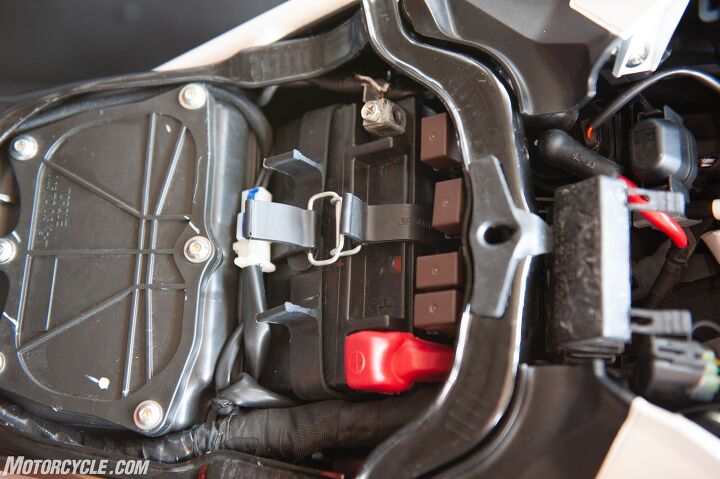
If you’re old-school, you can power your accessories direct from the battery. Just be sure to turn the thing off when you’re done.
Another option is to use third party CAN bus controllers – assuming one is available for your motorcycle. Typically these plug into the diagnostic port and send the proper signals to the primary CAN computer. Your accessories will then plug into it, and sometimes are able to be activated with the existing buttons on your motorcycle for an extra clean look.
Got It?
Starting to make sense? Well, it took us several read-throughs to make sense also. A lot of people, us included, are mystified by electrical systems on our motorcycles, especially when the spaghetti of wires under there gets increasingly larger and more daunting. For what it’s worth, there’s still a large number of new motorcycles sold today with a traditional fuse box, but it’s reasonable to expect the tide to turn as more tech gets loaded onto motorcycles of the future. So, it’s best to get a better understanding of it now.
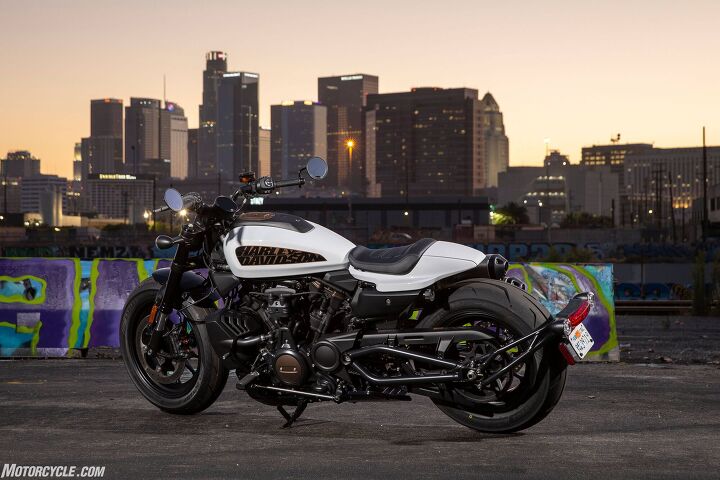
Harley-Davidson often gets flack for being stuck in the stone age, but The Motor Company have been incorporating CAN BUS into its models for several years.
The irony is that the automotive industry is already exploring the next generation of data protocols, potentially making CAN tech obsolete on four wheels while it’s still in its infancy on two.
FAQ
What is a CANBUS system?
The term CAN (Controller Area Network) BUS refers to a network protocol, usually with a central computer – separate from the motorcycle’s ECU – acting as the central communication hub between all the other subsystems.
What is CANBUS on BMW motorcycles?
CANBUS on a motorcycle serves the same functions as it does on automobiles. A CANBUS data network can be thought of like the human nervous system. At the top we have our brain. The brain sends signals through a central channel (the nervous system) to various parts of the body to do something. In the early 2000s, BMW is credited with being the first manufacturer to incorporate the tech on two wheels.
Where is the CANBUS located?
The CANBUS is typically part of the wiring harness with connectors attaching it to the various subsystems of the motorcycle (think ABS, ECU, and just about everything else controlled via electricity).
Become a Motorcycle.com insider. Get the latest motorcycle news first by subscribing to our newsletter here.
The post Canbus And Motorcycles appeared first on Motorcycle.com.
Copyright
© Motorcycle.com

